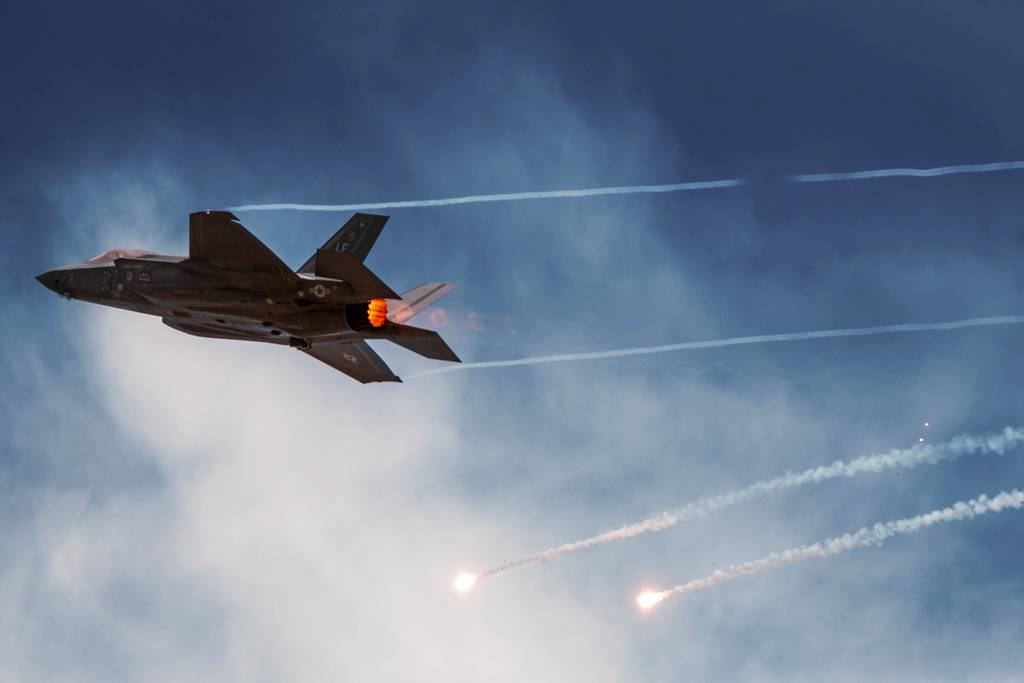
History serves as a stark reminder of the consequences of neglecting air superiority, a mistake America must not repeat with the F-35 Joint Strike Fighter as it did with the F-22 Raptor.
In 2009, the F-22 program was abruptly cancelled after the production of only 187 aircraft — a quarter of the originally planned 750 fighters. This short-sighted decision left the U.S. Air Force with a diminished capacity to maintain air superiority in the face of evolving threats from the major military adversaries, China and Russia.
Created as America’s premier air superiority fighter, the F-22′s stealth capabilities, speed, and agility were designed to dominate any adversary. However, ongoing fiscal concerns and a miscalculation of the evolving capabilities of our adversaries led to its early termination.
Today, we are at a crossroads with the F-35. Some in Congress are threatening further cuts to the F-35 program due to budgetary pressures and delays in software upgrades known as Block 4/Technical Refresh 3.
We cannot let history repeat itself.
It is simply imperative that Congress learns from past mistakes and ensures that F-35 production is maximized to bolster national defense and maintain our strategic advantage over our adversaries.
During my time as NATO Supreme Allied Commander in Europe, I witnessed firsthand the evolution of aerial warfare and the indispensable role that fifth-generation aircraft like the F-22 and F-35 play in modern conflict.
In the years since the F-22′s cancellation, the F-35 has emerged as the cornerstone of U.S. and allied airpower. The F-35′s ability to remain undetected, provide pilots with unprecedented situational awareness, and to close the sensor-shooter kill chain quickly make the aircraft a peerless adversary.
The F-35′s role the last few years in maintaining deterrence has been indispensable. Since Russia’s invasion of Ukraine, allied F-35s have been instrumental in identifying Russian air defense systems and securing NATO airspace from incursions from Russian aircraft. Joint exercises with U.S. and NATO F-35s have also demonstrated the alliance’s ability to respond to aerial threats quickly and effectively.
In peacetime, tactical aircraft — fighters — are generally in much higher demand than other weapons platforms to show resolve, police airspace, etc. And if war comes, fighter aircraft will be the tip of the spear for America and her allies, as our doctrines rely on the establishment of air superiority.
From the P-51 Mustang, which played a pivotal role in securing air superiority over Europe at the end of World War II, to the F-15 Eagle and F-16 Fighting Falcon, which were deployed to counter the Soviet Union’s numerical advantage during the Cold War, history is replete with examples of the critical importance of a robust fighter force.
Today, we have significant demand for tactical aircraft in the Indo-Pacific, in the European theater, and in the Middle East — not to mention homeland defense.
While the demand for tactical aircraft is almost bottomless, the supply is not. The Air Force’s current fighter inventory is the oldest and smallest it has ever been. The advanced age of our tactical aircraft fleet has a deleterious impact on cost and readiness, not to mention survivability.
The F-35 is simply the only allied stealth fighter in production that meets the demands of modern warfare. Its advanced capabilities make it the preferred choice for over 20 nations around the world, from the United Kingdom to Japan.
Yes, there are frustrating delays in TR-3 technology upgrades to the F-35, as the GAO recently highlighted. Those upgrades will maintain and extend the F-35′s advantage over any adversary, but even now the F-35 remains the dominant fighter in the sky.
Pulling back on F-35 orders might feel good, but it’s not the responsible solution. Do not repeat the mistakes made with the F-22 program. The premature cancellation of the F-22 program left a void in our Air Force, whose repercussions we are still feeling today.
In the late 1930s, America saw the gathering storm and began to re-arm. In the early 1980s, America answered the growing threat of the Soviet Union and its satellites with a buildup that ultimately helped peacefully bring down the Warsaw Pact.
Today, we face a global threat environment on par with those moments.
That global threat environment demands we build as many F-35s as we can, as fast as we can. To do otherwise is to invite aggressors to take their best shot. That would, indeed, be history repeating itself.
Author: Gen. Philip Breedlove, Air Force (Ret.)
Source: DefenseNews



